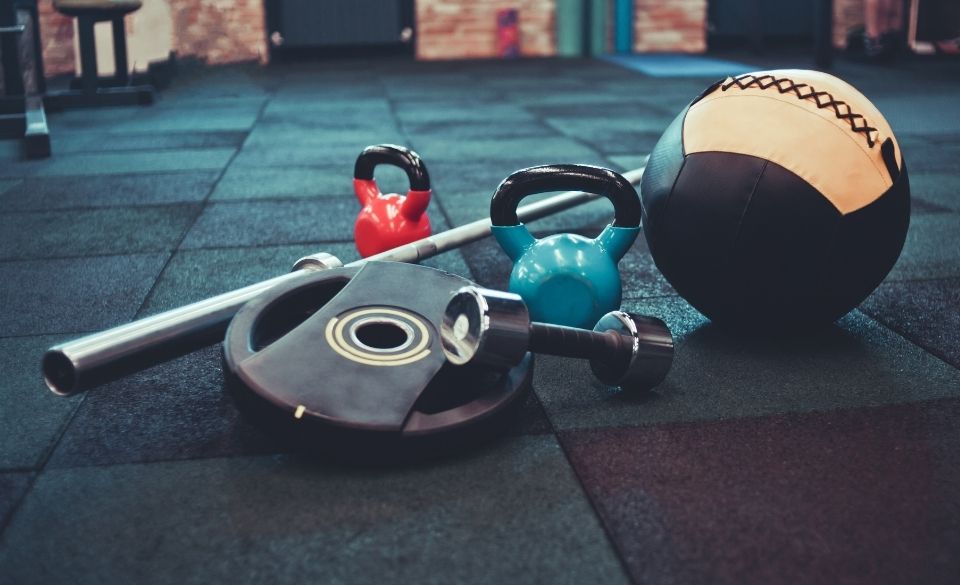
Best Strength Training For Runners – What Are The Best Exercises?
Page Contents
If you ended up on this page, you are looking for the best strength workouts for runners. You may be searching this to help your running performance You may even be searching for strength workouts to help reduce the chance of injury. No matter what the reason is, strength exercises are important to help you improve your running and stay injury-free.
In this article, I am going to share with your some of the best strength training runners should do. Then after you have read the article you should know a little bit more about:
– The Benefits of strength training for runners
– Strength training for running injury prevention
– Running injury prevention exercises
– Strength exercises to improve your running
– Advanced Strength exercises for Runners
– How to begin your running strength training plan
What’s Strength Training?
Strength training is a form of training that forces the muscles to tighten and contract against an external resistance. When you lift weights you are ultimately trying to condition your muscles so they can handle a heavier resistance. This resistance can be created by a bar weight, dumbbells, kettlebells, or even resistance bands. Alternatively, you can also use your body weight instead of normal weights. Just think of push-ups, squats, lunges, and similar other strength exercises.
A study from the NSCA (National Strength & Conditioning Association) showed that lifting weights can help strengthen muscles and joints. By lifting weights or performance strengthening exercises, you build proper form, helps improve your running times and help to reduce the risk of injuries.
Other studies found that exercises like squats and single-leg jumps and lunges can help reduce the chance of injury in the lower legs when running. They also found it to help improve overall running performance.
Some of the other benefits of strength training for runners are:
– Help you run faster
– Fix muscle imbalances
– Burns more calories
– Improves bone density
– Improves running form
– Strengthens upper body muscles

Muscles Used While Running
Your body is a complicated machine, it requires thousands of functions every second to allow you to run or even walk forward. That being said, there are some key muscles used while running. These include the quadriceps, hamstring, hip flexors, glutes, and calf muscles. While there are other muscles used while running, the above muscles are the main driving force behind your stride.
However, that doesn’t mean you shouldn’t care about the smaller muscles groups because these muscles (core, upper body, and lower back) all help to create a stable and powerful stride. If any of these smaller muscles become weak or injured, it will affect your training similar to that of the larger muscle groups.
When you put these two groups of muscles together and strengthen them all, you start to provide a more stable and efficient stride. Not only that, but you also help to improve your speed and running economy.
Quadriceps Muscles Used When Running
The quadricep muscles located on the front of the thighs are primarily used for forward leg movement. the quadriceps consist of four muscles. These are the Vastus Medialis, Intermedius, Lateralus, and the Rectus Femoris.
Hamstrings Muscles Used When Running
Located on the back of the thigh, the hamstrings consist of a large tendon and place a vital role in walking, standing, and running. It also places an important part in the extension of the hip and knee flexion. These muscles consist of the biceps femoris, Semitendinosus, and the Semimembranosus
Gluteal Muscles Used in Running
The gluteal muscles consist of three key muscles, the Gluteus Maximus, Gluteus medius, and the Gluteus minimus. The gluteal muscles are responsible for the extension of the hip, knee alignment, and also correct posture.
Hip Flexors
Located on the front of the hip and known as the iliopsoas, the hip flexors help stabilize the hip joint and help you keep good posture. So, whenever you lift your leg the hip flexors play a vital role in the movement and strength of the lift. The muscles in the hip flexors consist of two main muscles, the iliacus and psoas major.
Calf Muscles
Last but not least is the calf muscles. These are a critical muscle group used when running as it helps maintain lower body balance. Located just below the hamstrings and knees, the calf muscles consist of the gastrocnemius and soleus muscles.
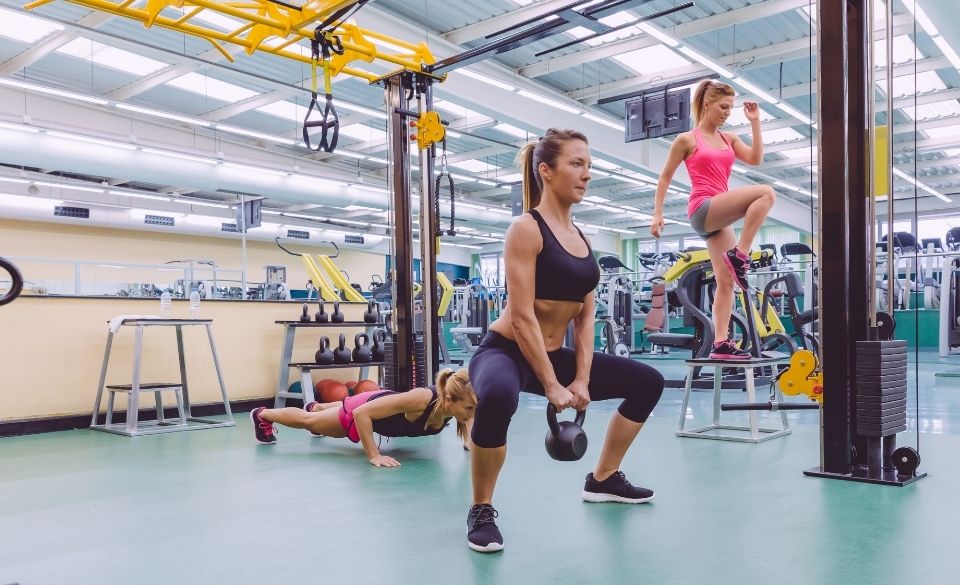
The Best Strength Exercises For Runners
Since we have given you a basic idea of the key muscles used in running, it’s time to put it together. Here are some of the best strength exercises for runners and triathletes. (Remember strength training should take roughly 45 minutes to complete and should be performed 2-3 times per week)
I’ve also provided you with YouTube tutorials showing you exactly how to do each exercise. Proper form is king!
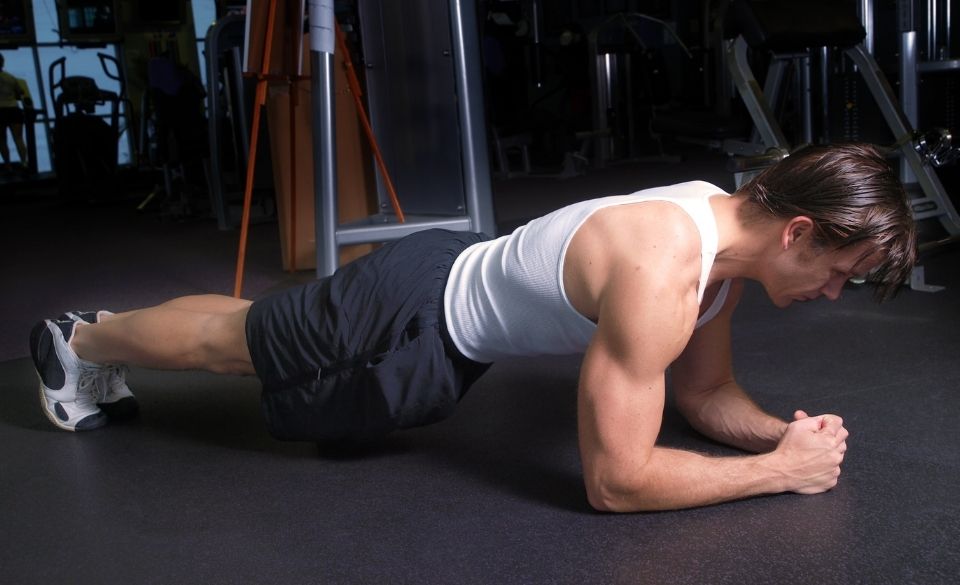
The Plank Exercise
One of the easiest strength exercises to perform but gives huge benefits in strength is the Plank. The plank focuses on the core and lower back and shoulders.
How to perform the Runners Plank?
1. Start by lying on your stomach.
2. With your feet slightly apart, lift yourself up onto your elbows. Keeping hip-distance apart and locating your shoulders directly over your elbows.
3. Next, straighten the whole body and form a straight line between the back of your head your heels.
4. Hold the position for 30-45 seconds and focus on engaging your core.
5. As you get stronger you can increase the duration of the exercise to 60 seconds or longer.
As your form gets better and you get stronger you can look to increase the duration. You can also add weight to your back or legs to increase the weight and improve your core strength.
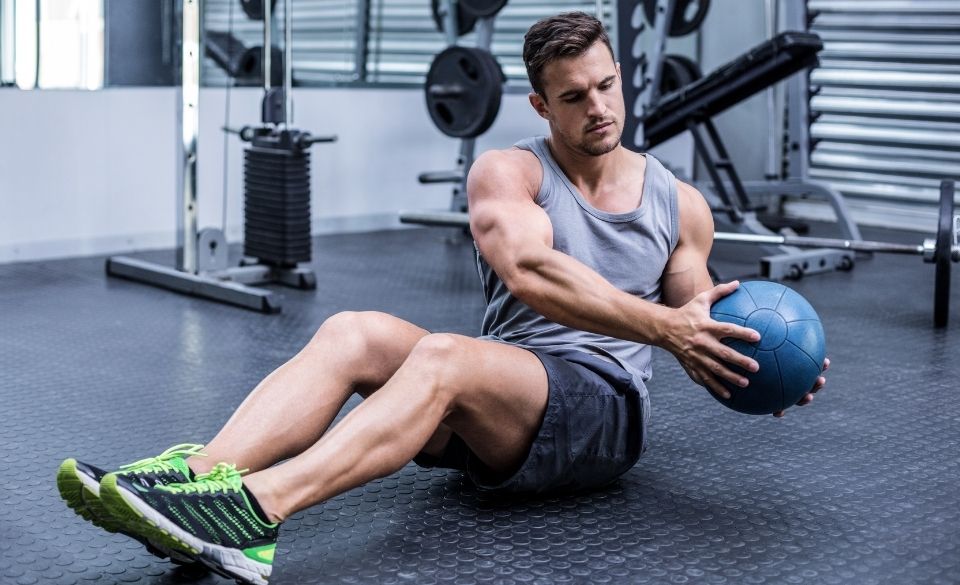
Russian Twist
The Russian twist benefits the runner greatly. This is because it targets the core muscles, including the abdominals, obliques, back, and hamstring muscles. You can also use extra weights of a medicine ball as you get stronger and your form gets better.
How to Perform the Russian Twist?
1. First, lie on your back with a weight placed in front of you.
2. Keep your legs perpendicular to the floor and bend your knees to 90 degrees
3. Lift the weight and hold it out in front of you. Focus on keeping your back straight.
4. Rotate your torso as far as you can to the left. Place the weight to the floor for a few seconds then rotate the torso all the way to the right and repeat.
Overhead Lunges for Runners
The overhead lunge is a common exercise used by runners. The reason being is that it targets the whole body including the quadriceps, hamstrings, glutes, and shoulders. It also targets the core muscles, lower back, and abdominal muscles. Because it can be anywhere, the overhead lunge is one of the best strength exercises for runners.
How to Perform the Overhead Lunge?
1. With a pair of dumbbells or weights, hold them above your shoulders. Keep your arms straight and lock your elbows.
2. Next, bend our knees slightly and keep your feet shoulder-width apart,
3. Step forward holding the weights above your head. Then with your left leg perform a deep lunge while bending both knees.
4. Return to your starting position and complete the same movement with the right leg.
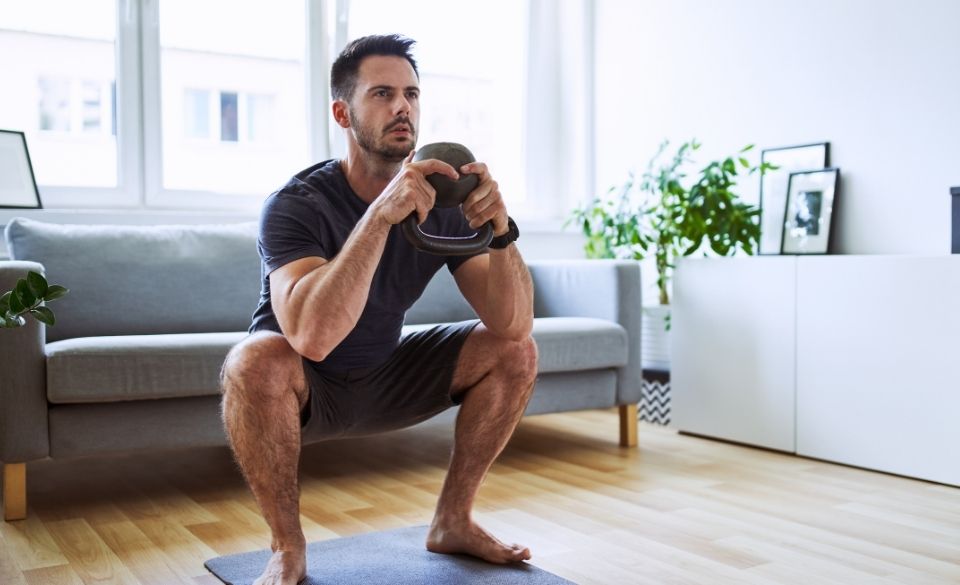
Bodyweight Squats
Bodyweight squats are one of the best strength exercises you can do at home. Because a bodyweight squat targets running-specific muscles it should be included in every runner’s strength training plan.
They are convenient to do, and can easily be added to your post-run routine.
How to do a Body Weight Squat?
1. Stand up straight with your feet about hip-width apart.
2. Face your toes forward and leave your arms out in front of your chest.
3. In that position squat down by bending your knees.
4. Make sure to learn slightly forward from the waist and keep the back flat. Your knees should track behind your toes.
5. Squat down until your quadriceps are parallel to the floor.
6. To return to the start position (standing up). Drive downwards with your heels.
Single-Leg Deadlifts
Not as easy to perform as the bodyweight squat, the single-leg deadlift is a great exercise to target the hamstrings and glutes. The single-leg deadlift can also help to improve your balance and strengthen your lower legs for better stability.
How to perform the Single-Leg Deadlift?
1. Start by picking up two dumbbells and stand up straight.
2. Hold the two dumbbells out in front of you.
3. Next, shift your weight to your right foot.
4. Slowly hinge forward by bending your left knee. Then raise your right foot behind you, but keep it in line with your torso.
5. Slowly lower the weight
6. Once the weight has dropped below your knee, pause for 10 secs and then return to the starting position.
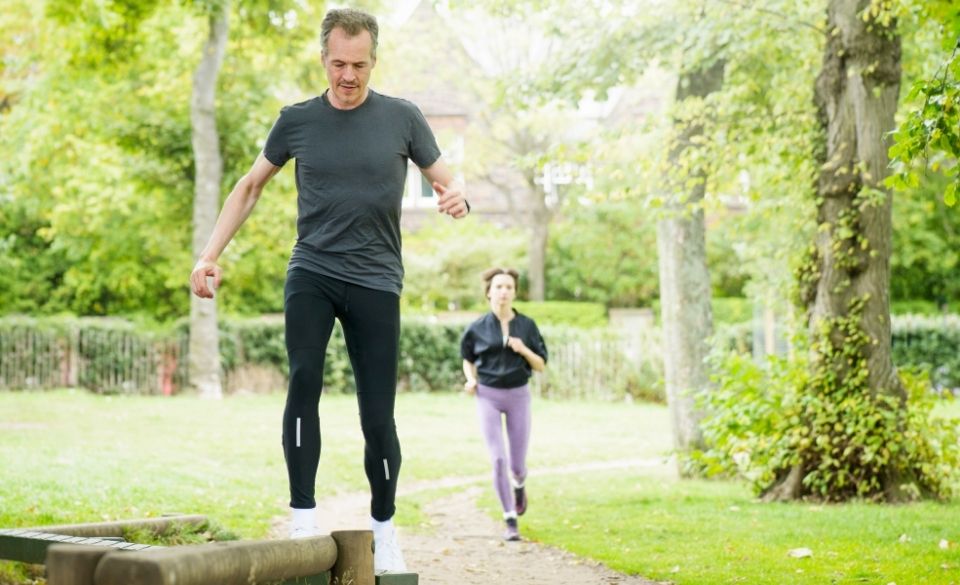
Circuit Training vs Strength Training For Runners
Circuit training is a high-intensity workout that consists of strength training and cardiovascular training. When performed the right way circuit training consisting of strength training and aerobic exercises is one of the best running-specific strength routines you can perform.
While both circuit training and strength training are slightly different from each other, both should be included in the runner’s strengthening plan.
Doing circuit training each week can not only help boost your endurance but also help strengthen muscles and reduce the chances of injury. For many runners, it also helps break up the monotony of running on the pavement each day and gives their body some variation in movement.
However, the combination of strength exercises and aerobic exercises will vary from person to person. It ultimately depends on your goals, fitness level, and time of the season.
Here is a simple circuit training routine for runners that is beginner-friendly. All you need to start is some space, a yoga mat, or a soft surface and if you want to make it more challenging, weights.
Between each circuit completion, take 2-3 minutes rest and take one to two minutes of recovery between each circuit.
– Run for 400-600 meters.
– Perform 30 air squats
– Then Do 30 push-ups
– Followed by 30 burpees
– Then 30 forward lunges
– Finishing with the plank position for 60 seconds
Hopefully, this article gives you some insight into some of the best strength training exercises for runners and helps you to understand the benefits of strength workouts. If you are unsure how to perform some of these strength exercises, contact your local running or strength coach. They can help check your form and help you put together a strength training plan for running.



